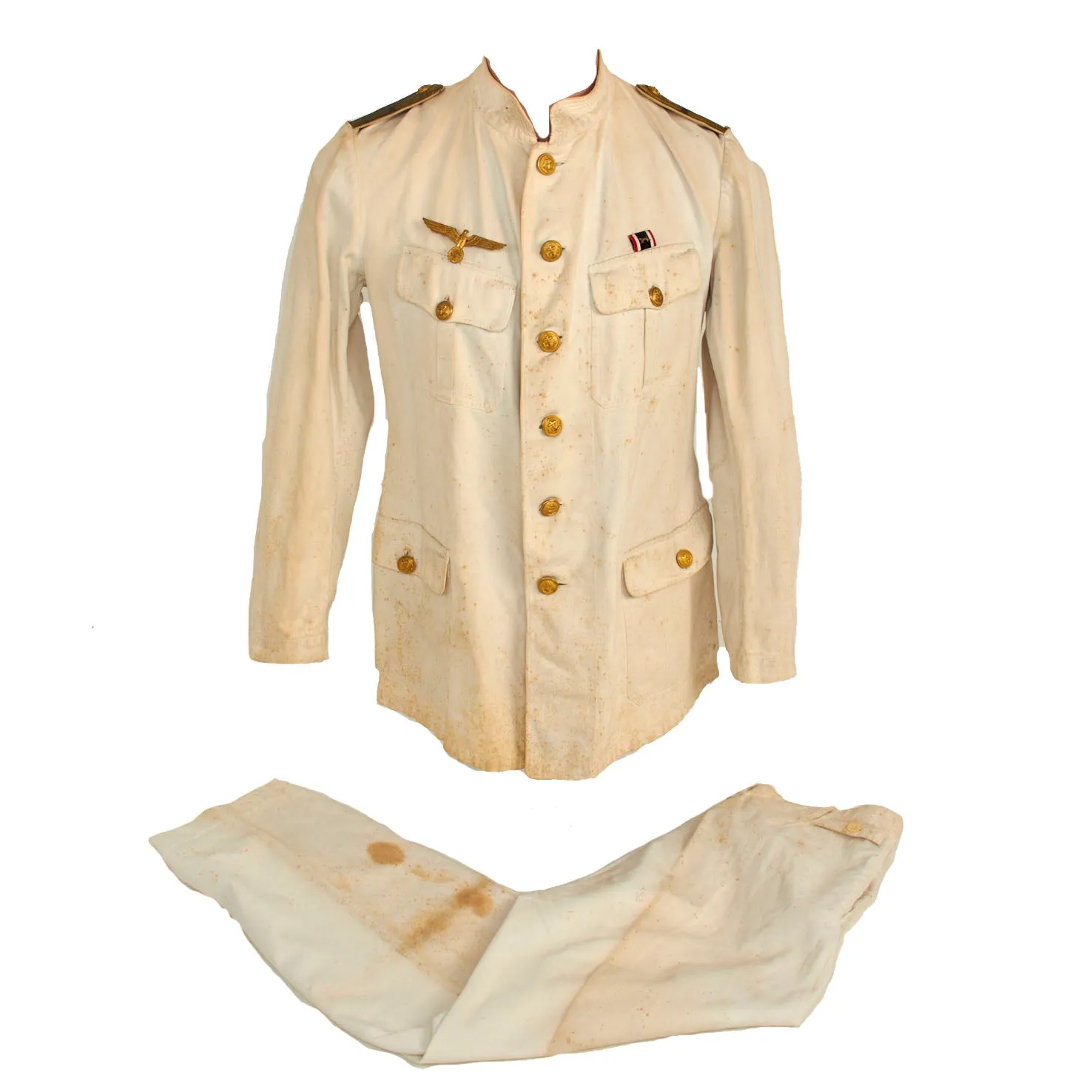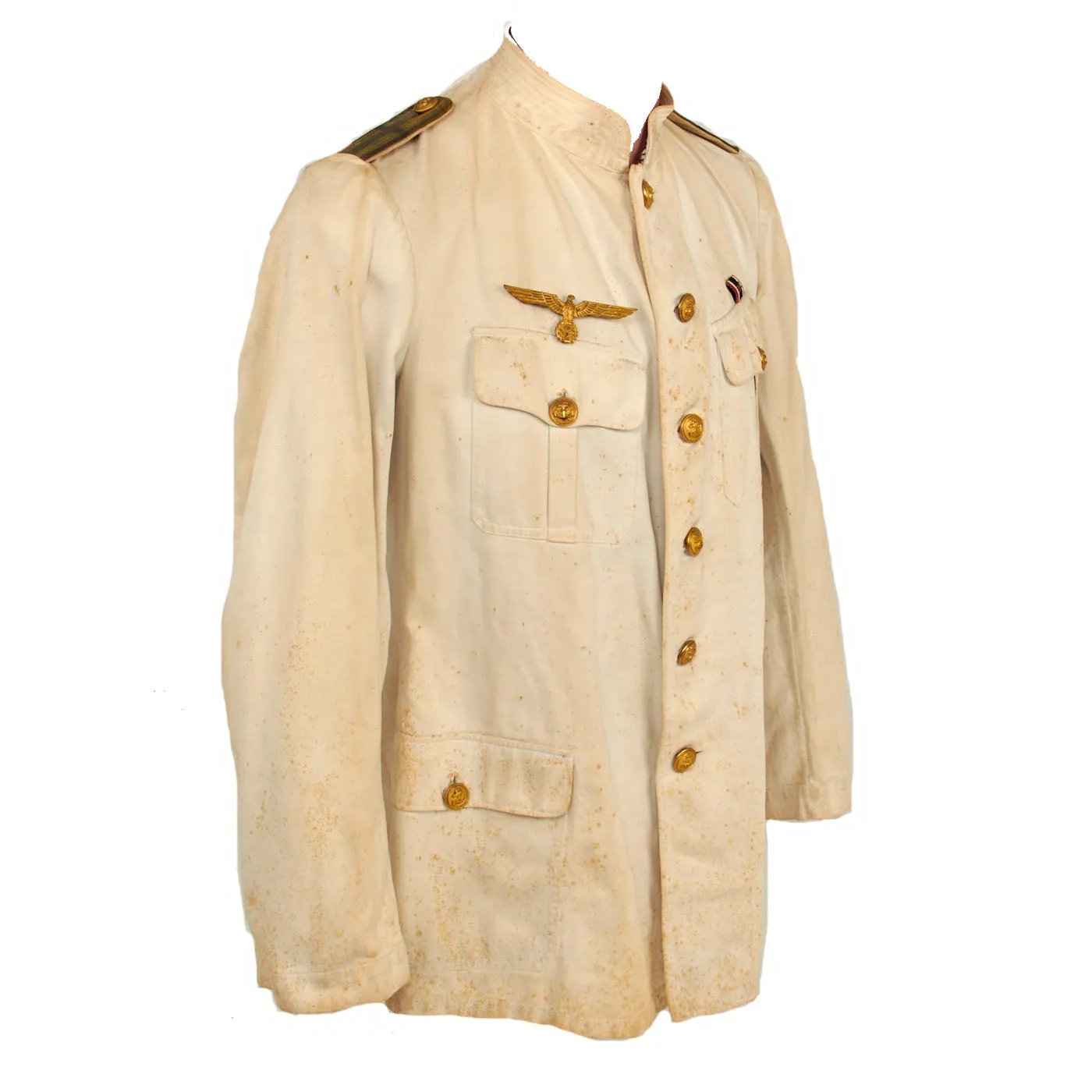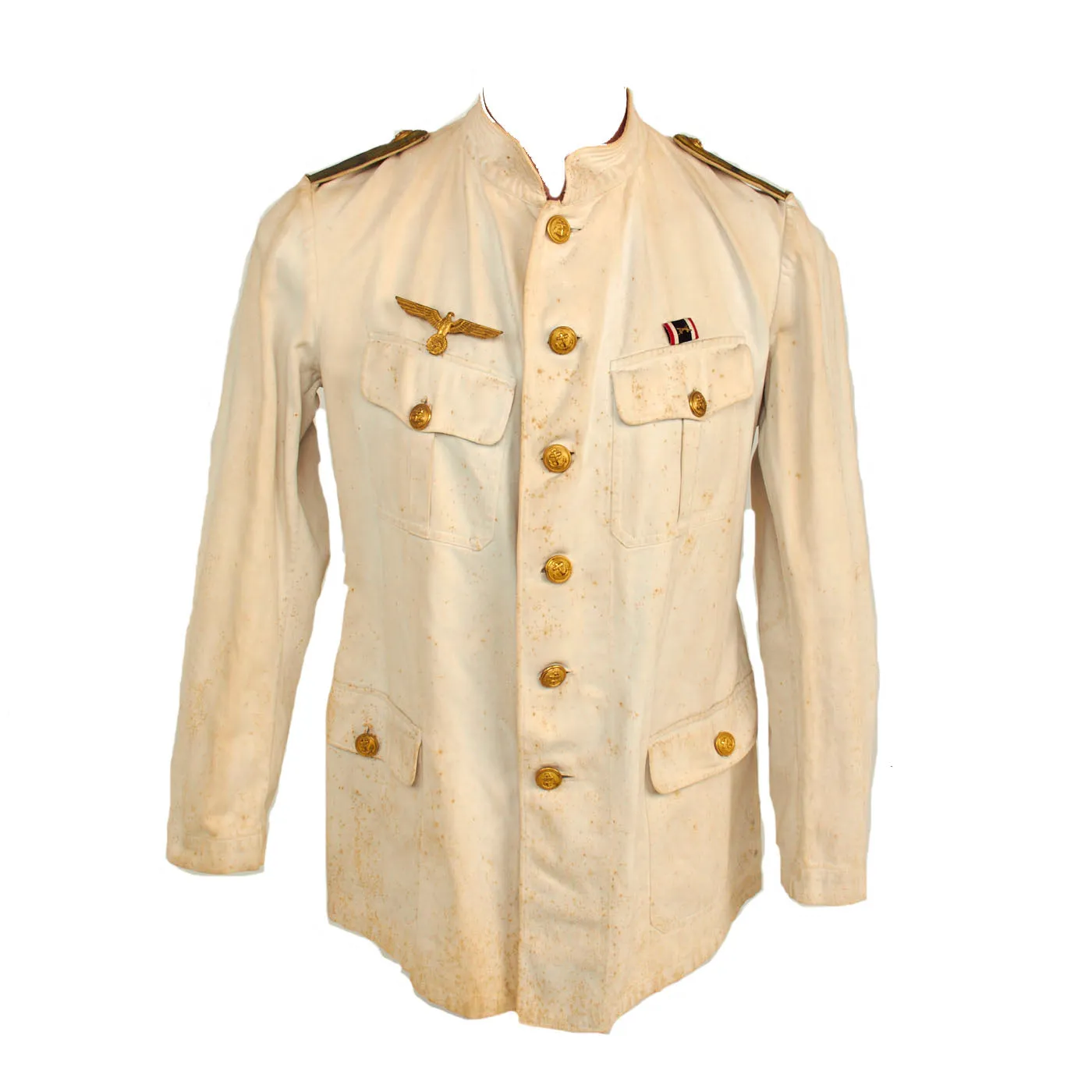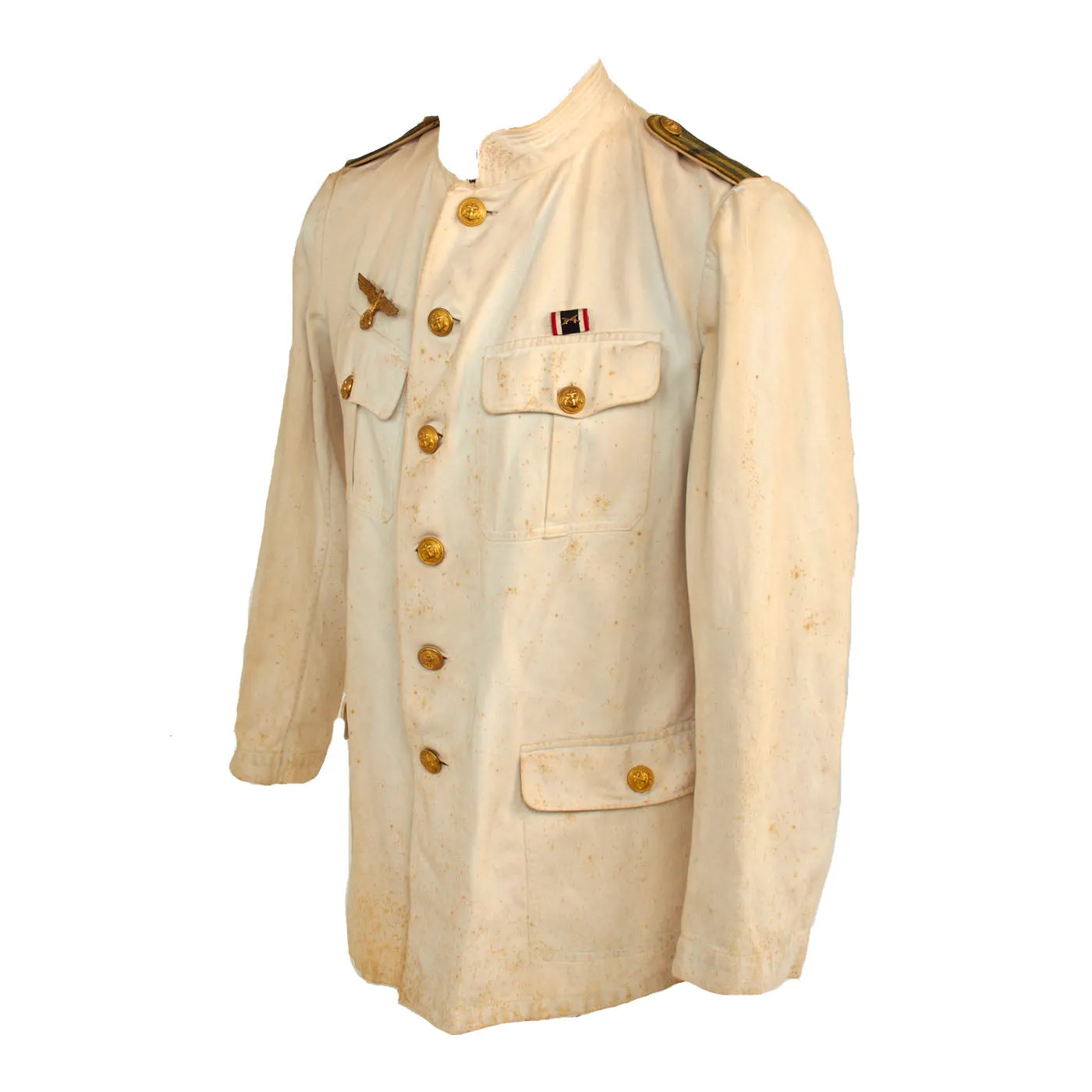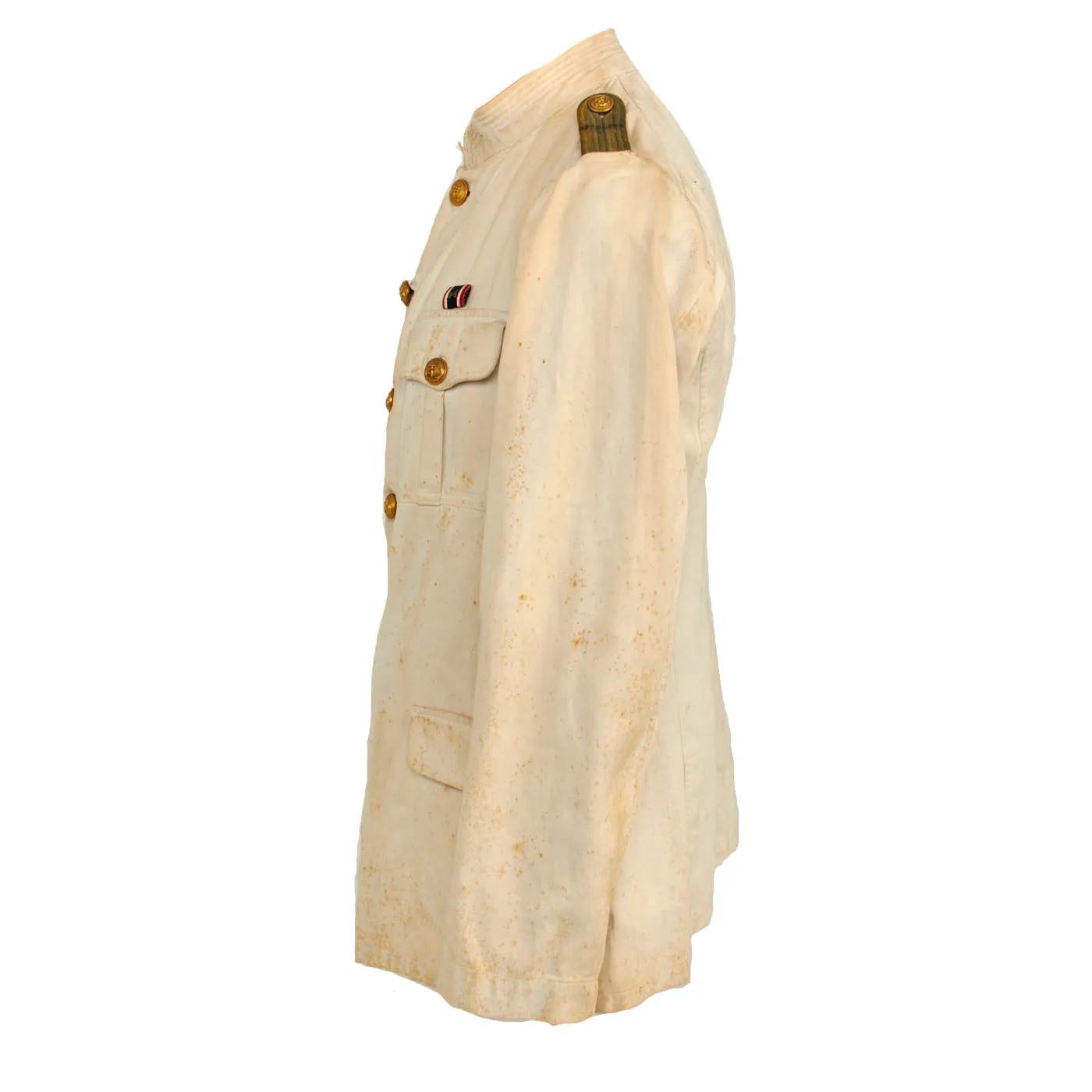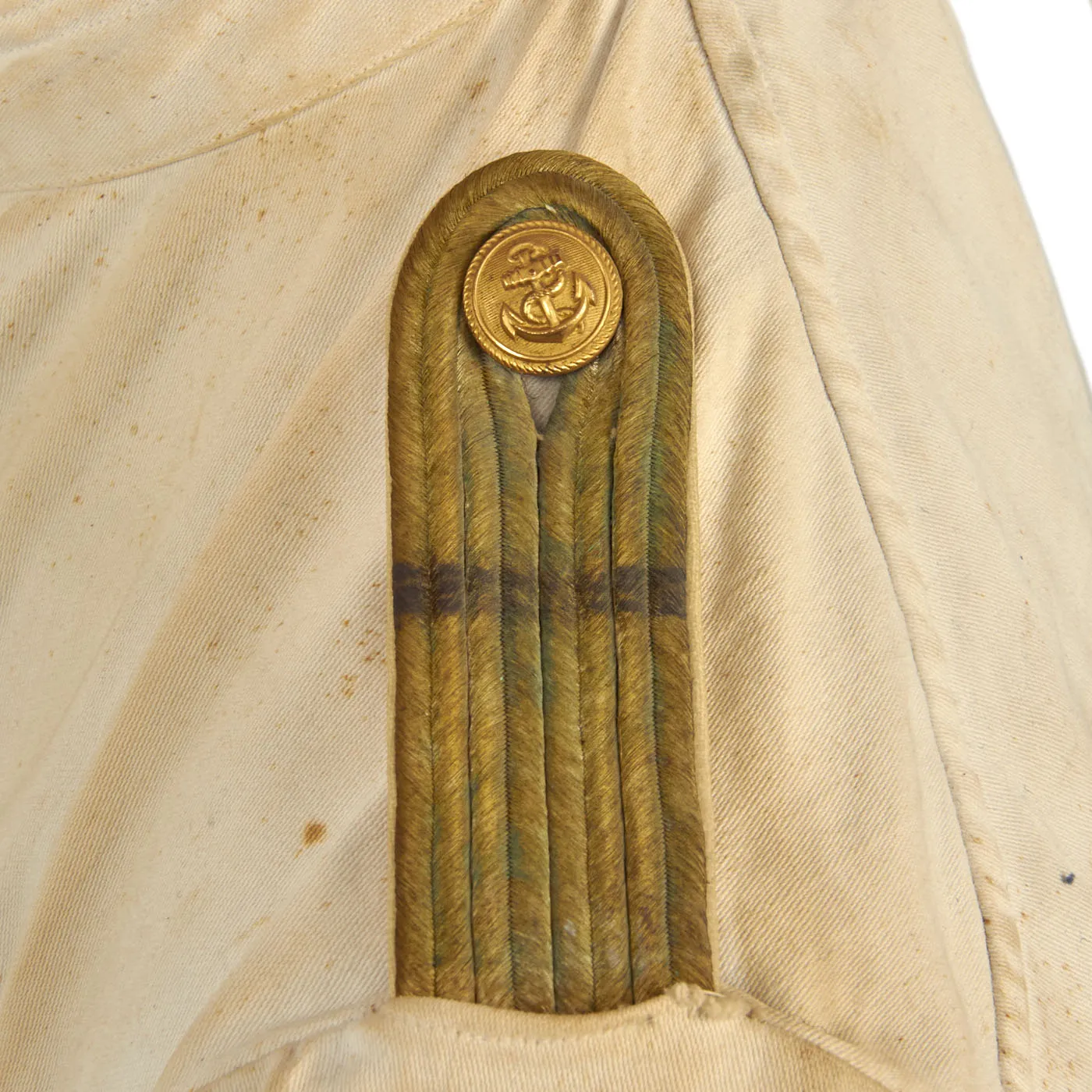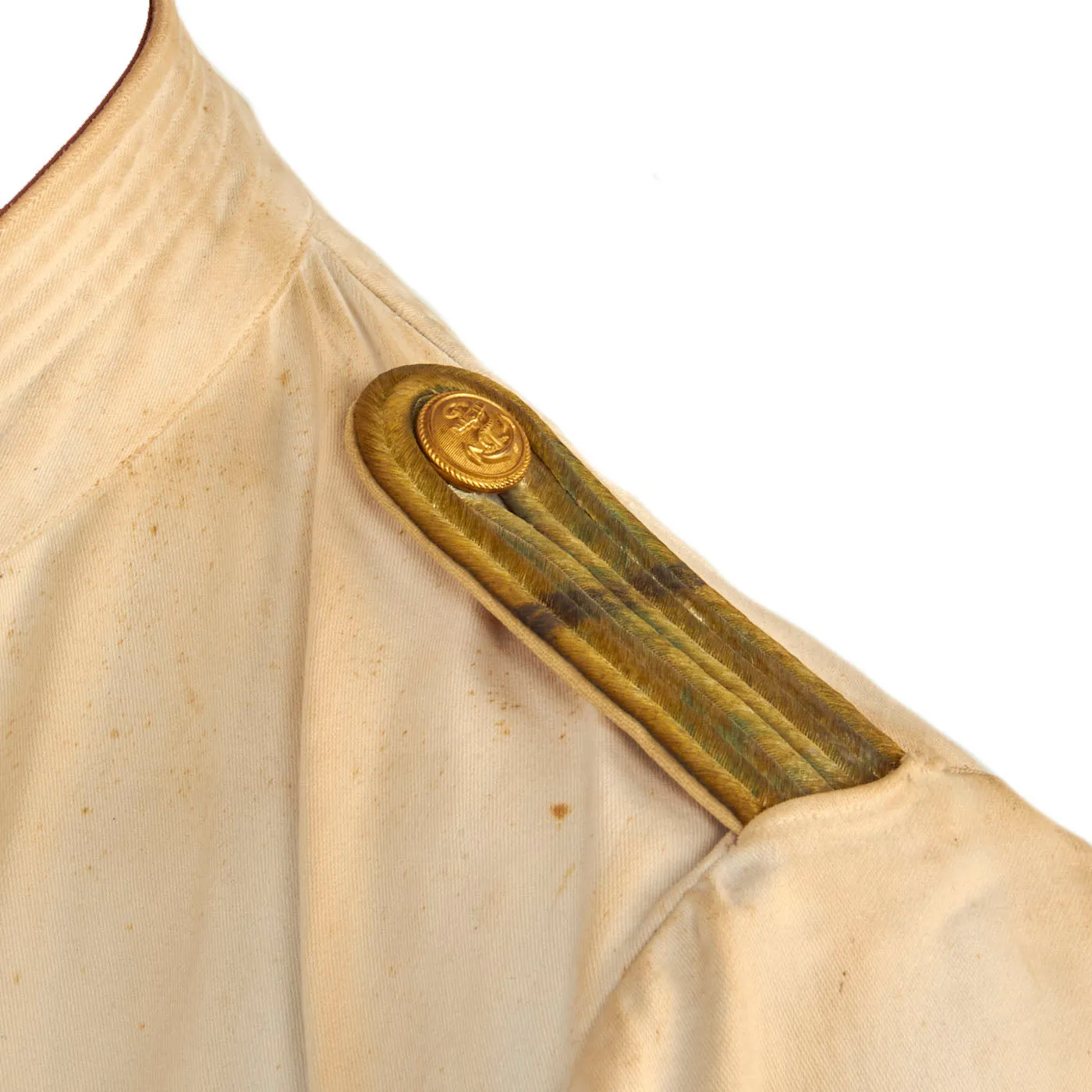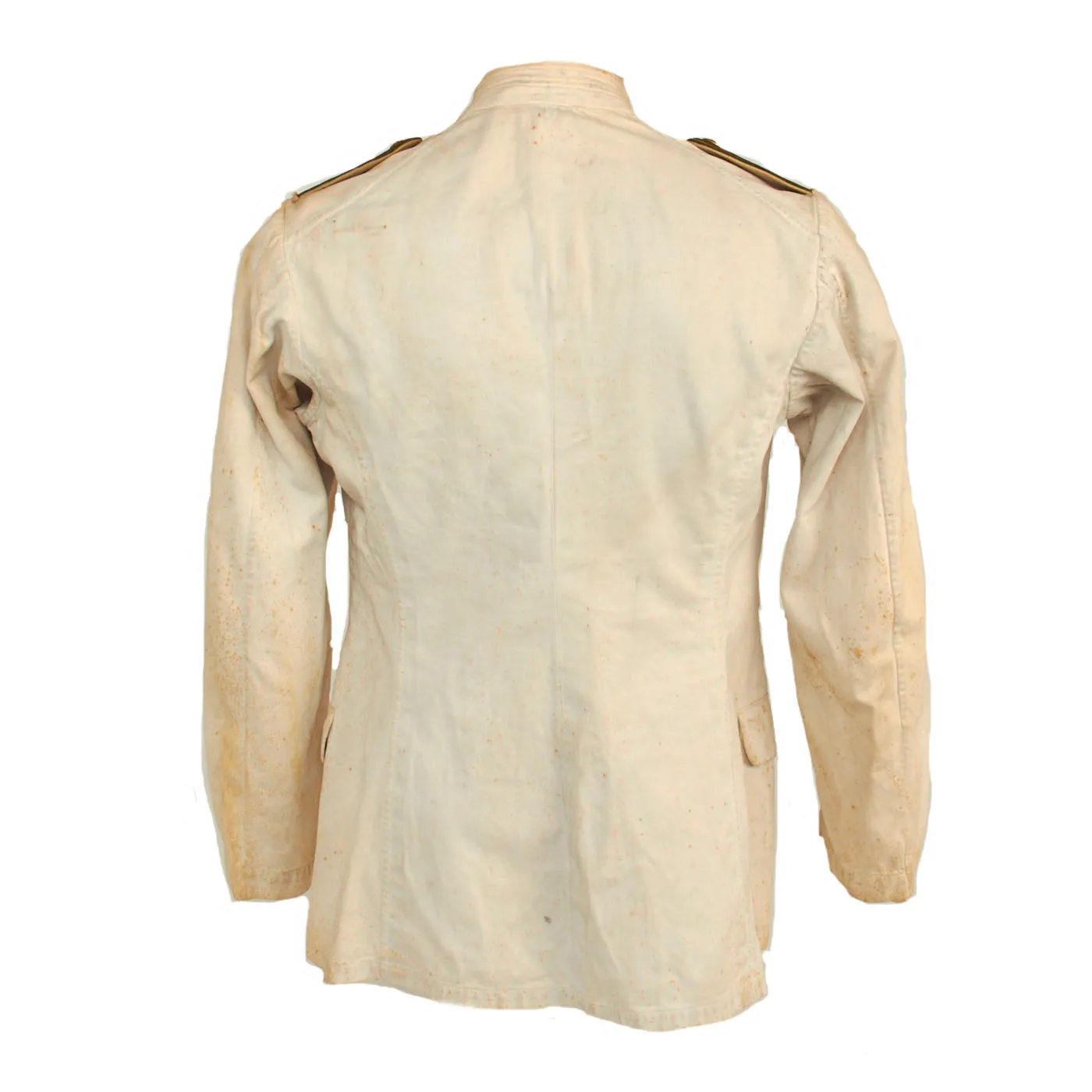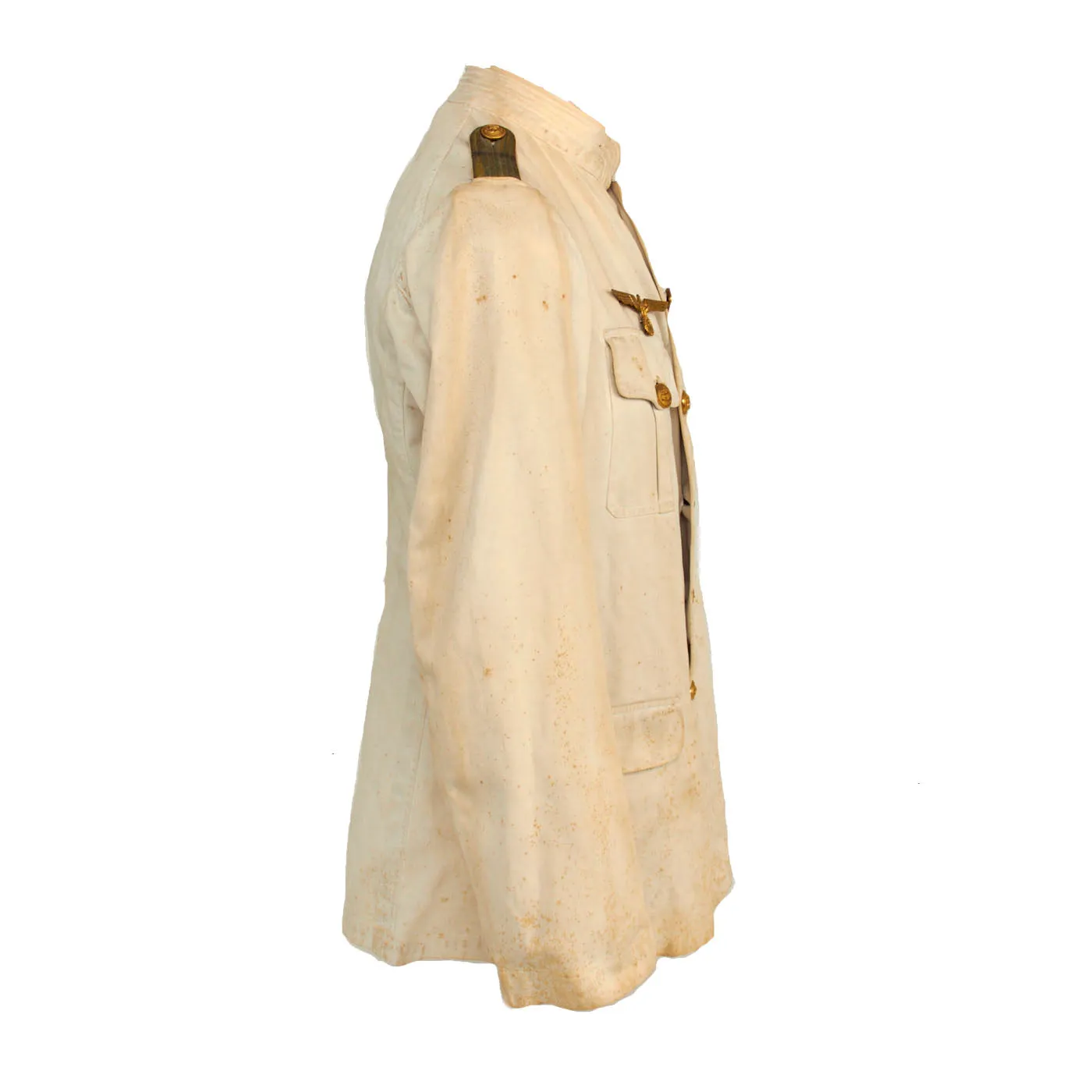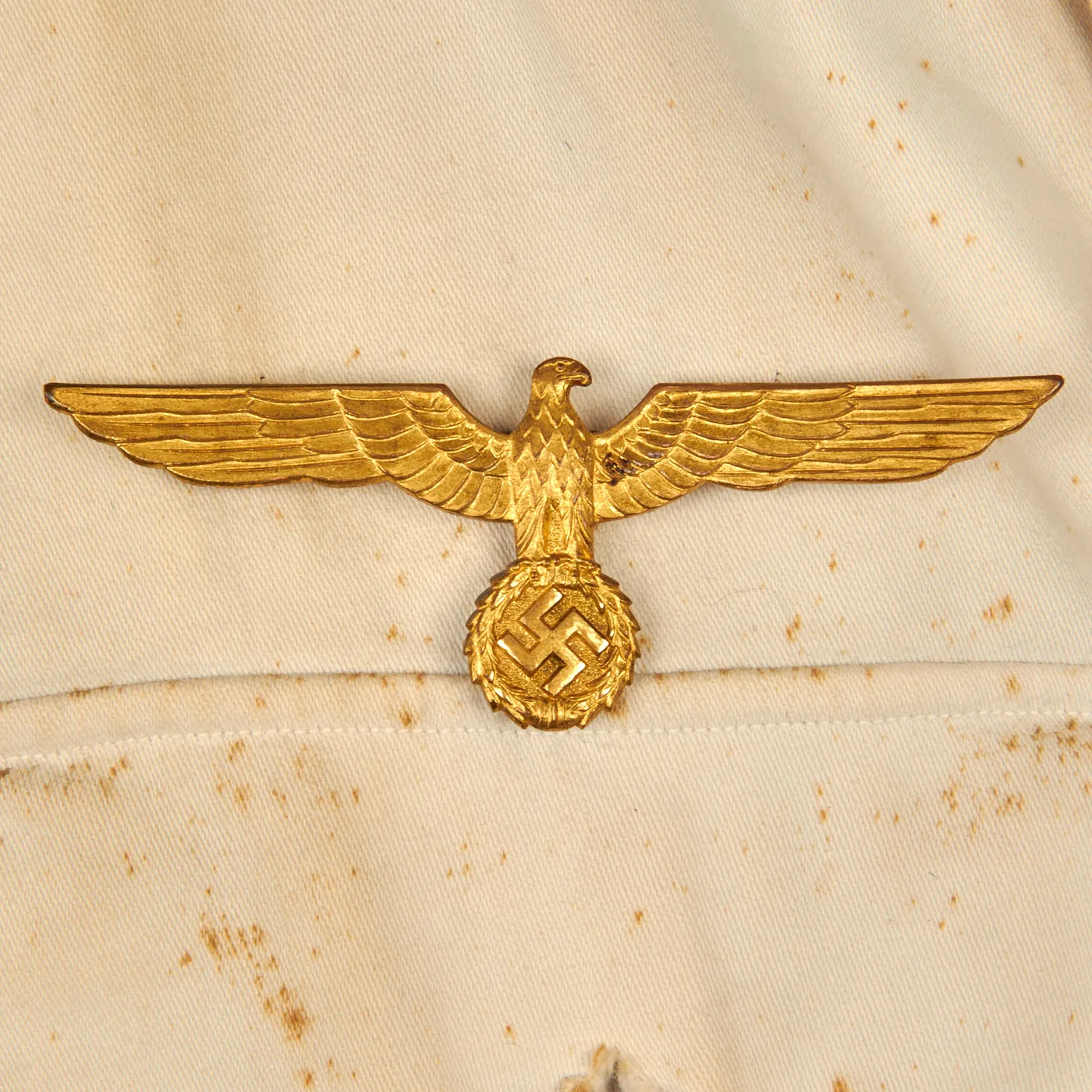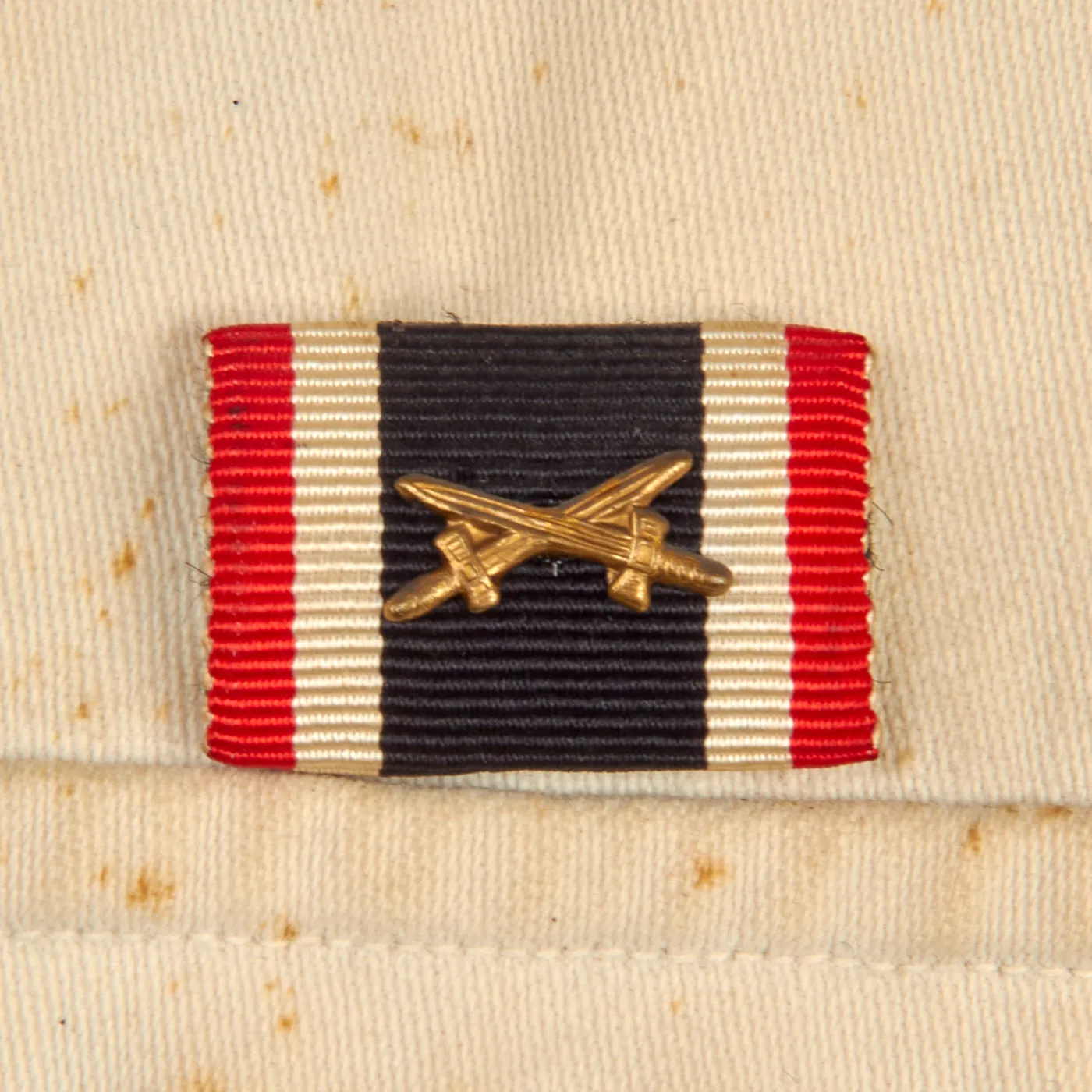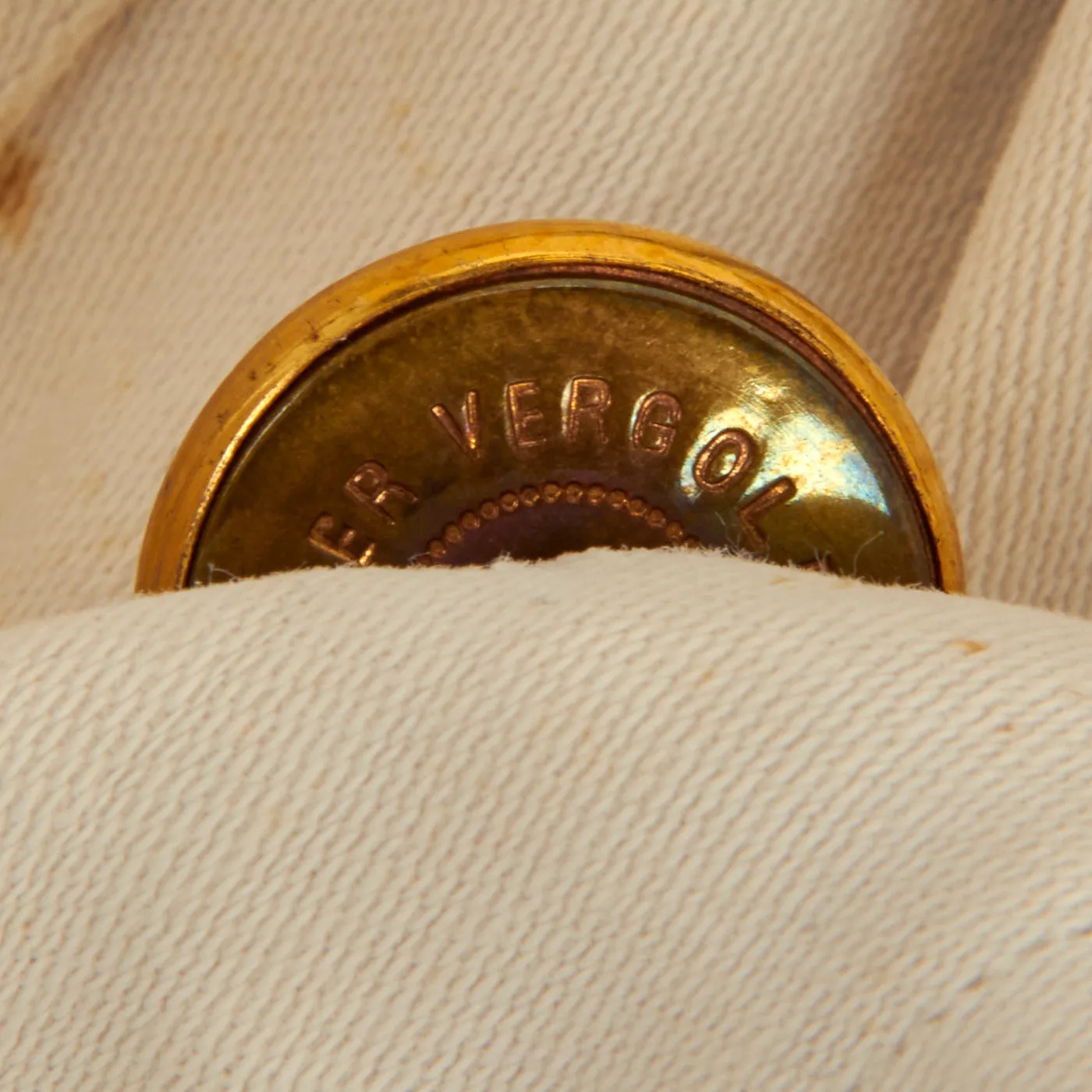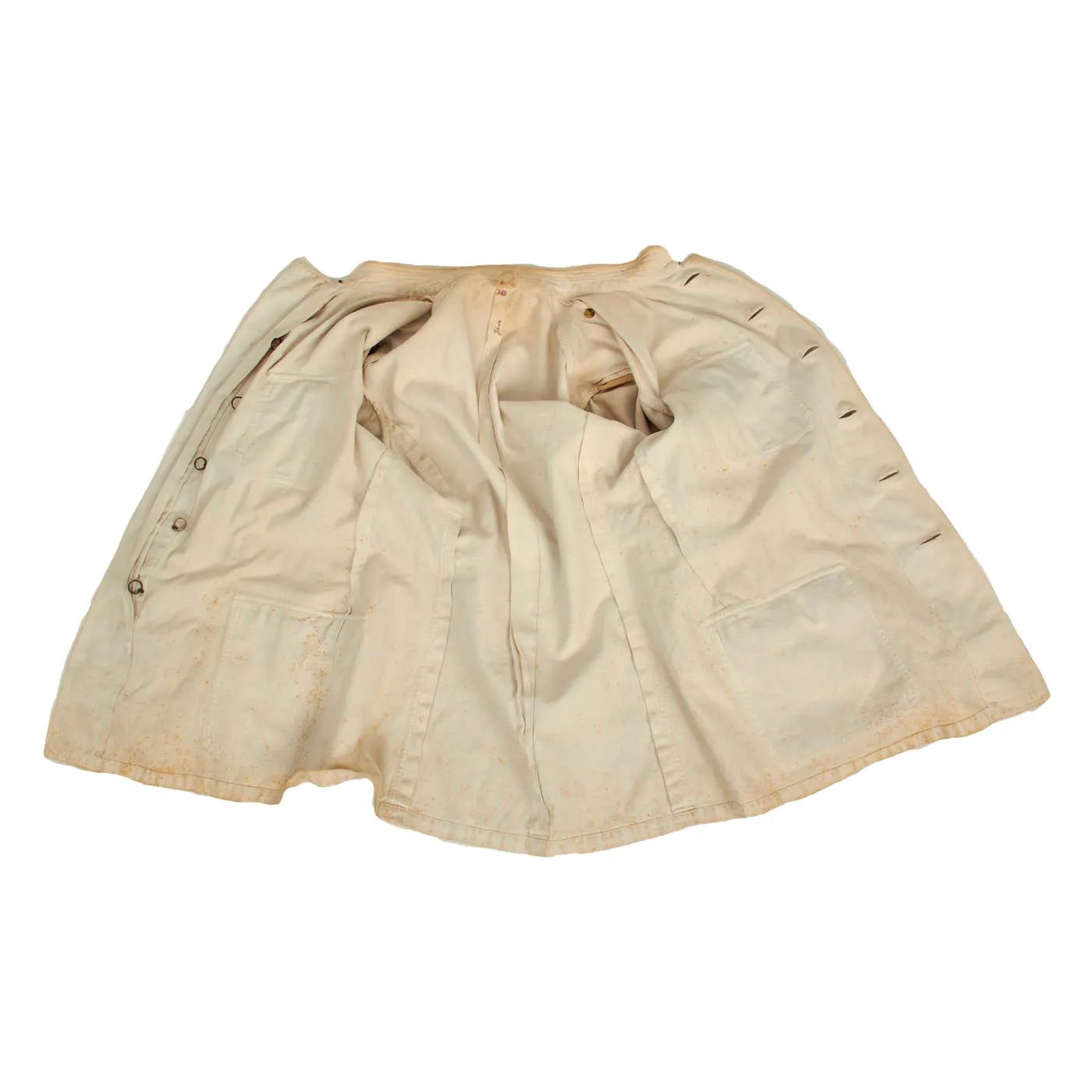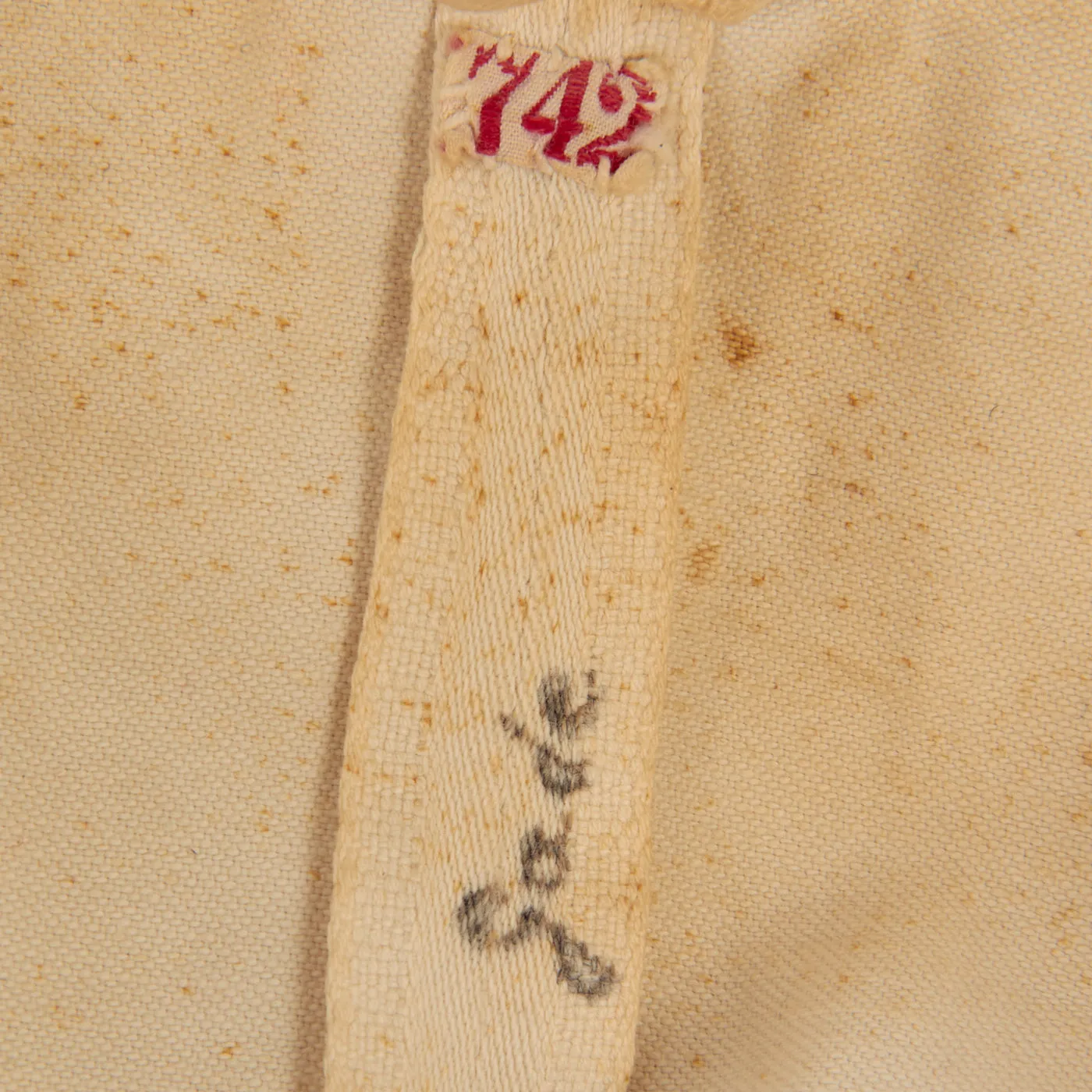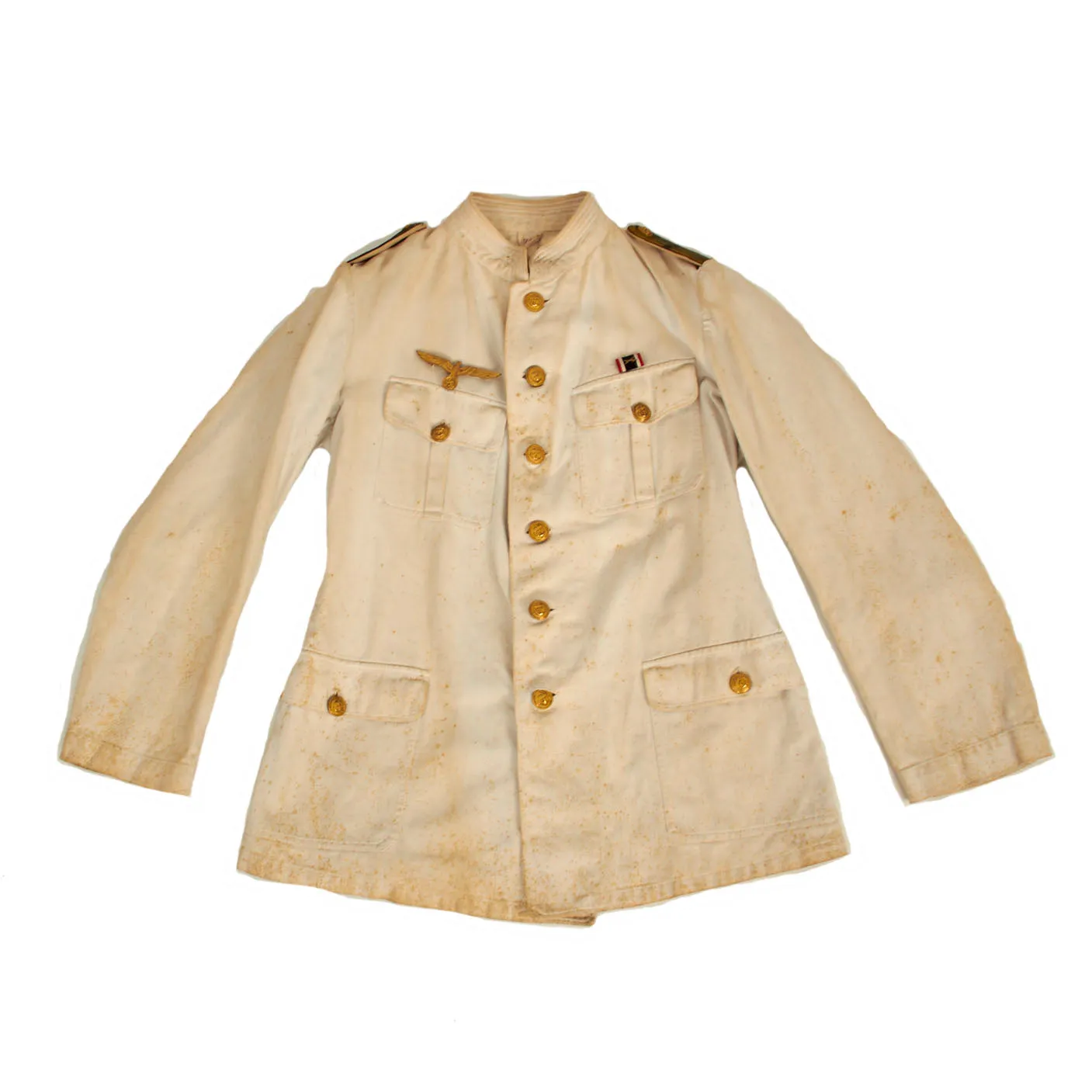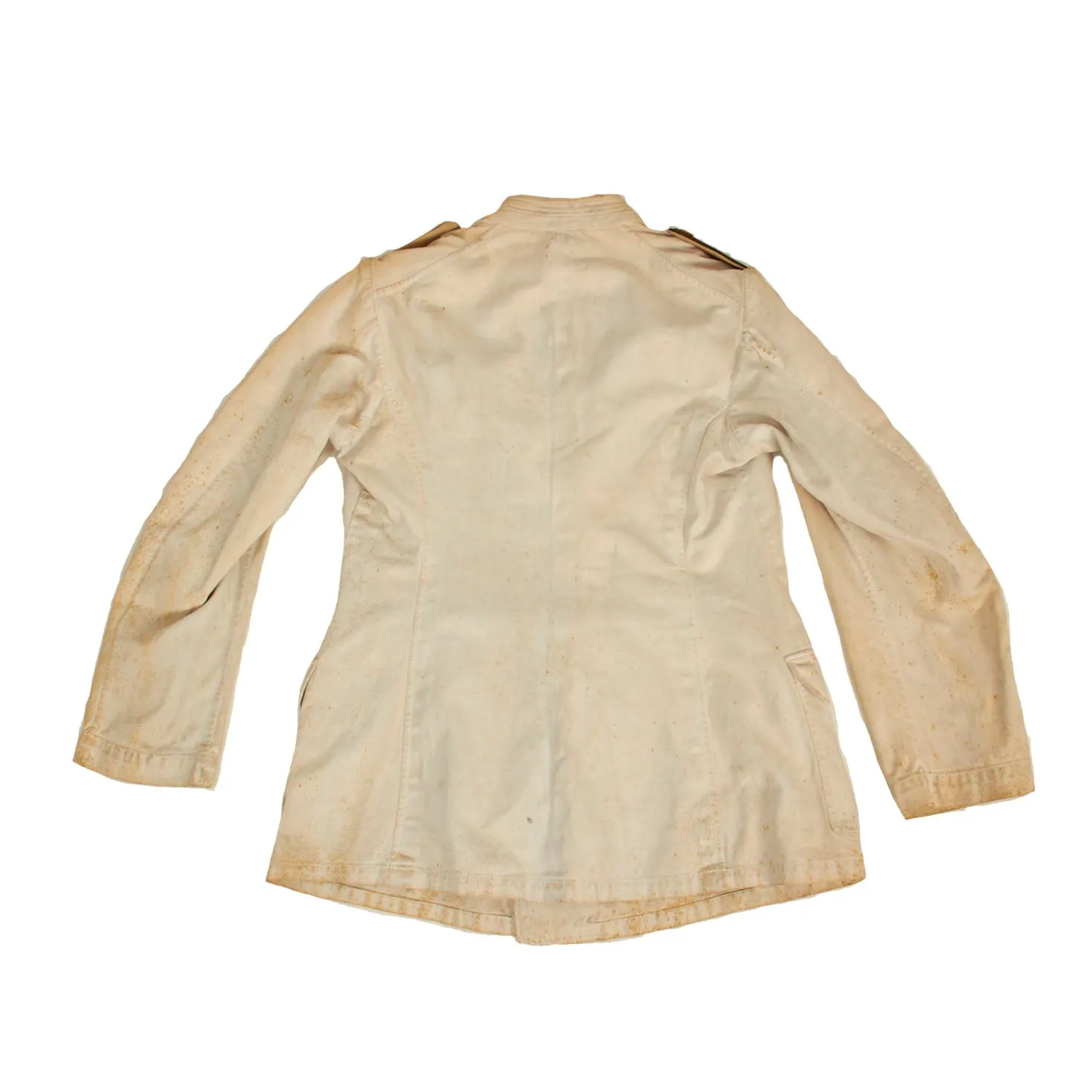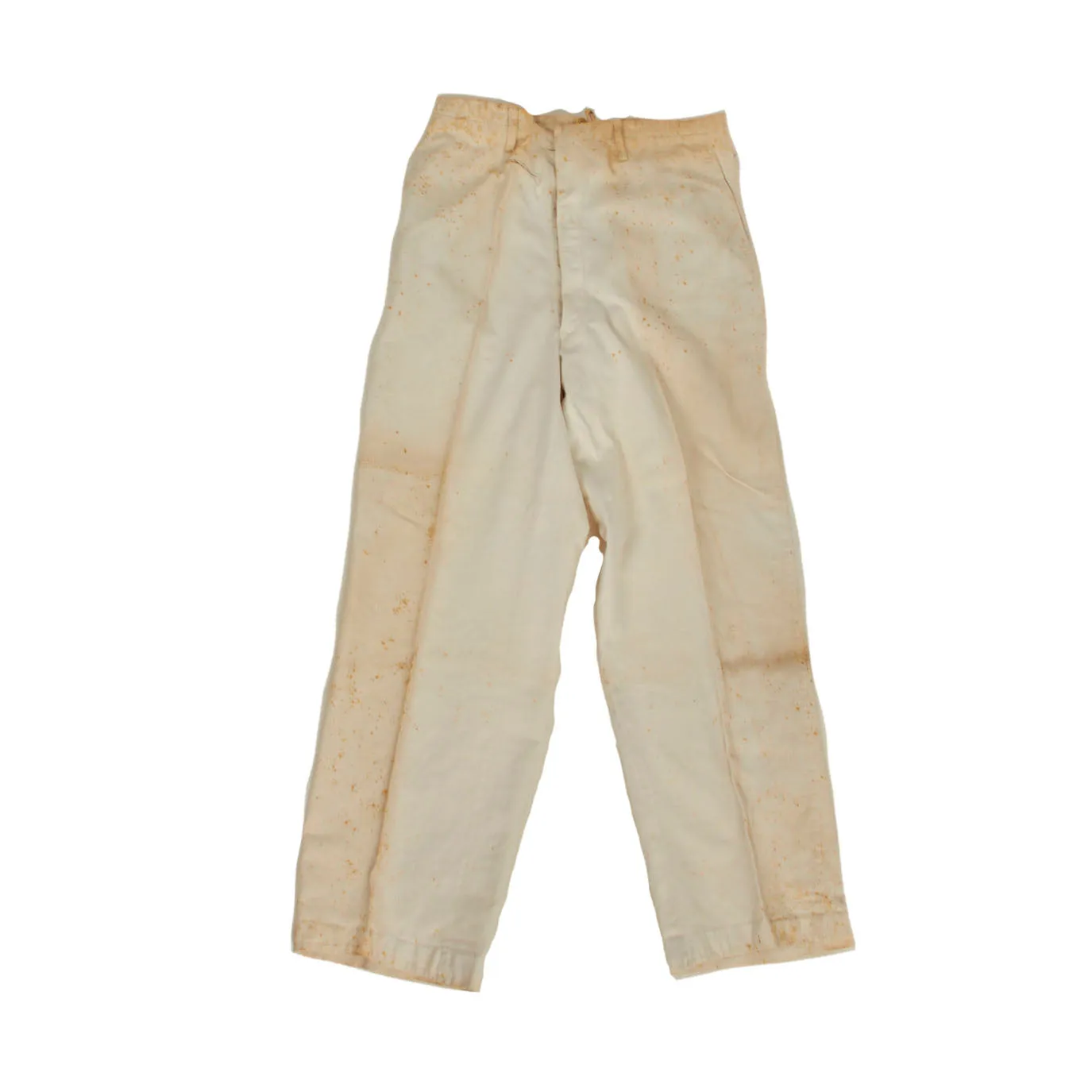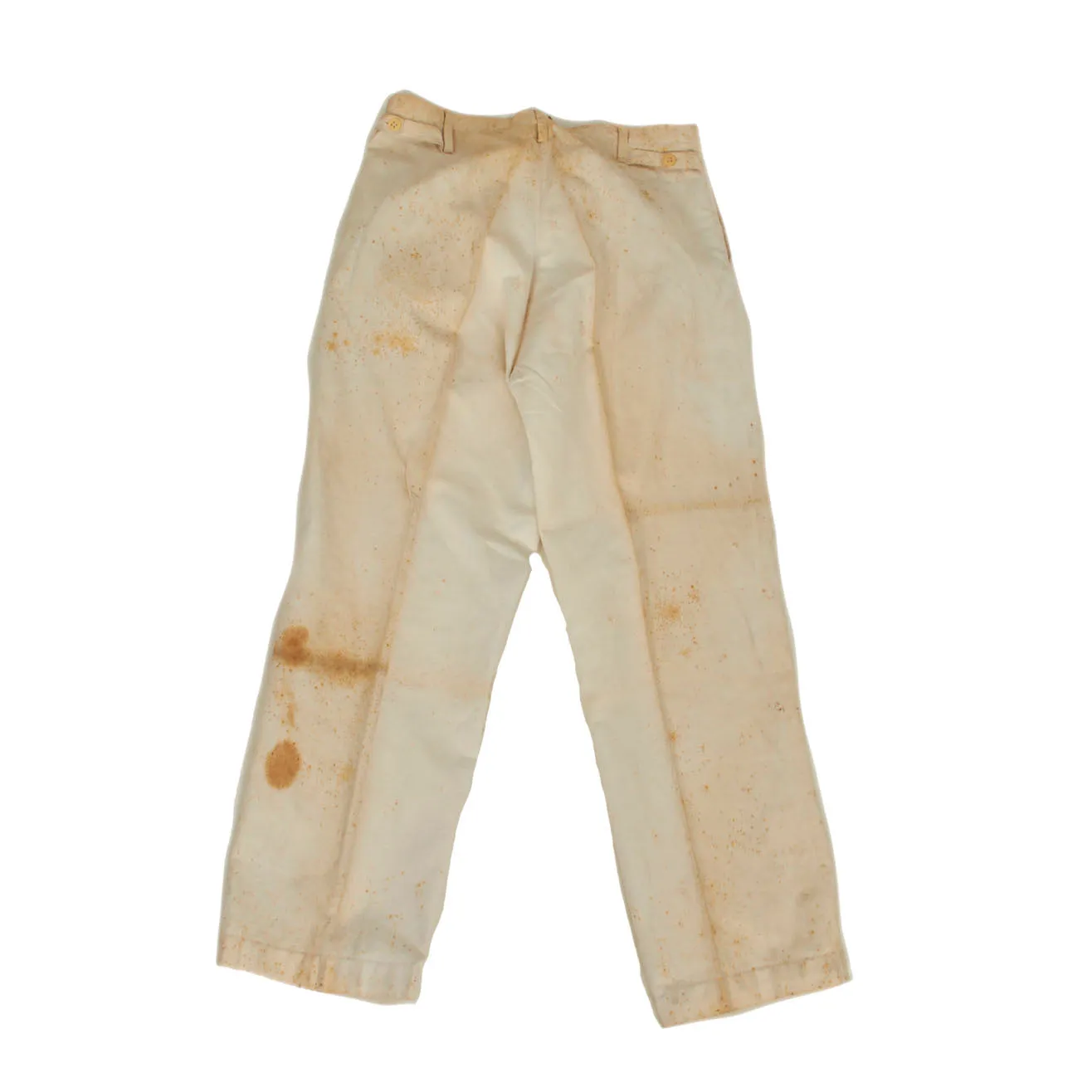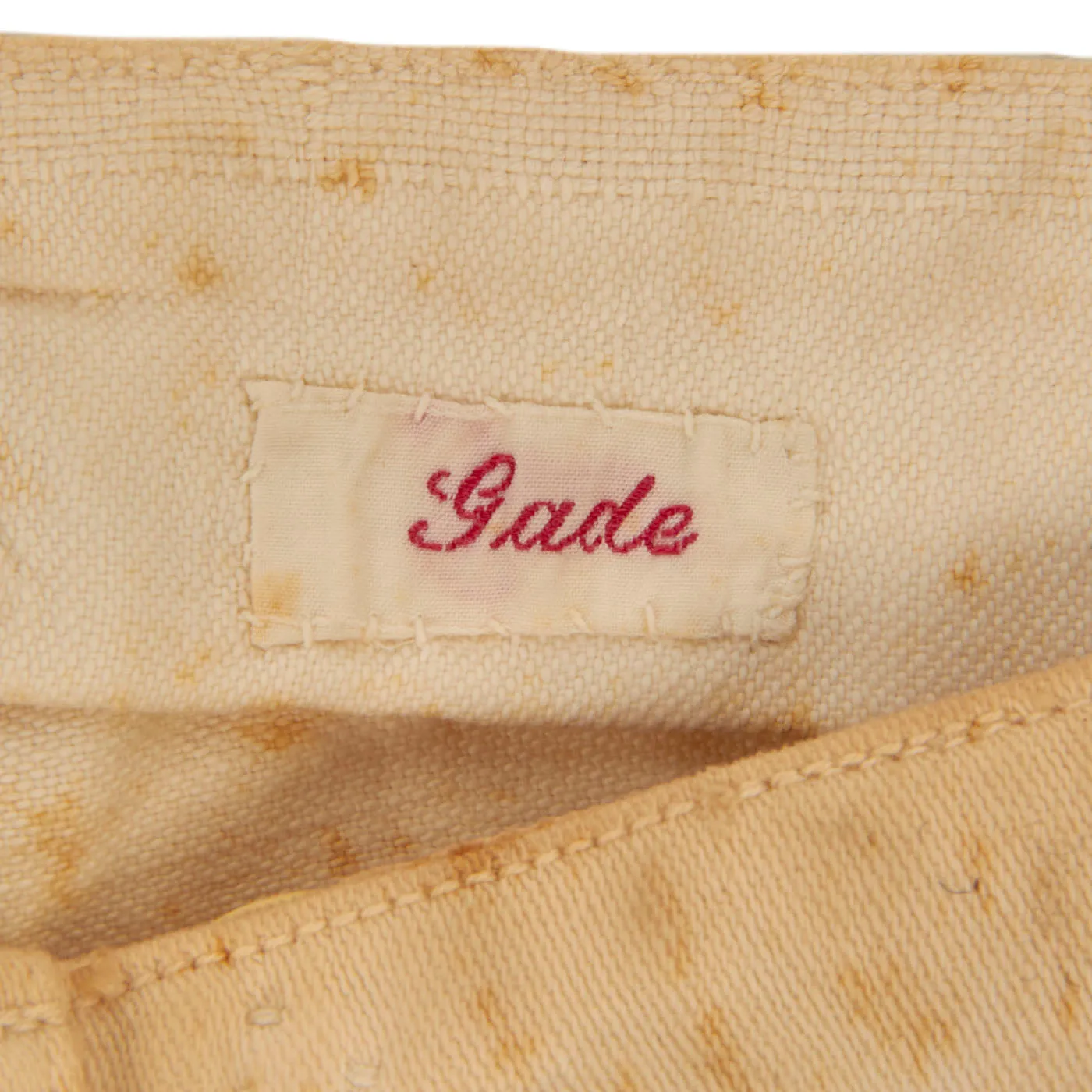Original Item: Only One Available. The Kriegsmarine was the navy of NSDAP Germany from 1935 to 1945. It superseded the Imperial German Navy of the German Empire (1871–1918) and the inter-war Reichsmarine (1919–1935) of the Weimar Republic. The Kriegsmarine was one of three official branches, along with the Heer and the Luftwaffe, of the Wehrmacht, the German armed forces from 1935 to 1945.
This very nice condition summer uniform consists of tunic and trousers and is fabricated from white cotton. The shoulders are adorned with Kriegsmarine Leutnant zur See shoulder boards incorporating rows of silvered aluminum wire, the end creating a button hole for a Kriegsmarine gilt button.
There are four pockets on the front, one on each breast and larger ones at the waist on both sides, each designed with a decorative pleat and gilt Kriegsmarine buttons, each of which is maker marked and are held in place by rings on the underside and embedded in the pleat. The front of the jacket has a vertical row of six Kriegsmarine gilt buttons, also maker marked held in place by rings on the underside and visible on the inside of the tunic.
The right breast above the pocket is enriched with a Summer Kriegsmarine breast eagle insignia pin held in place via two horizontally-aligned vertical loops in white threading. Above the left breast pocket is a War Merit Cross 2nd Class with Crossed Swords Pin.
The interior of the tunic has number tag stitched to inside neck and hand written ink name of Gade. Also included are matching white cotton pants with name tag stitched to inside that reads Gade.
Approximate Tunic Measurements:
Collar to shoulder: 9”
Shoulder to sleeve: 23”
Shoulder to shoulder: 17”
Chest width: 18”
Waist width: 17”
Hip width: 22”
Front length: 30"
Approximate Trouser Measurements:
Waist: 35"
Inseam: 29"
WWII Kriegsmarine
In violation of the Treaty of Versailles, the Kriegsmarine grew rapidly during German naval rearmament in the 1930s. The 1919 treaty had limited the size of the German navy and prohibited the building of submarines
Kriegsmarine ships were deployed to the waters around Spain during the Spanish Civil War (1936–1939) under the guise of enforcing non-intervention, but in reality supported the Nationalists against the Spanish Republicans.
In January 1939, Plan Z, a massive ship-building program, was ordered, calling for surface naval parity with the British Royal Navy by 1944. When World War II broke out in September 1939, Plan Z was shelved in favour of a crash building program for submarines (U-boats) instead of capital surface warships, and land and air forces were given priority of strategic resources.
The Commander-in-Chief of the Kriegsmarine (as for all branches of armed forces during the period of absolute NSDAP power) was AH, who exercised his authority through the Oberkommando der Marine ("High Command of the Navy").
The Kriegsmarine's most significant ships were the U-boats, most of which were constructed after Plan Z was abandoned at the beginning of World War II. Wolfpacks were rapidly assembled groups of submarines which attacked British convoys during the first half of the Battle of the Atlantic but this tactic was largely abandoned by May 1943 when U-boat losses mounted. Along with the U-boats, surface commerce raiders (including auxiliary cruisers) were used to disrupt Allied shipping in the early years of the war, the most famous of these being the heavy cruisers Admiral Graf Spee and Admiral Scheer and the battleship Bismarck. However, the adoption of convoy escorts, especially in the Atlantic, greatly reduced the effectiveness of surface commerce raiders against convoys.
Following the end of World War II in 1945, the Kriegsmarine's remaining ships were divided up among the Allied powers and were used for various purposes including minesweeping. Some were loaded with superfluous chemical weapons and scuttled.




